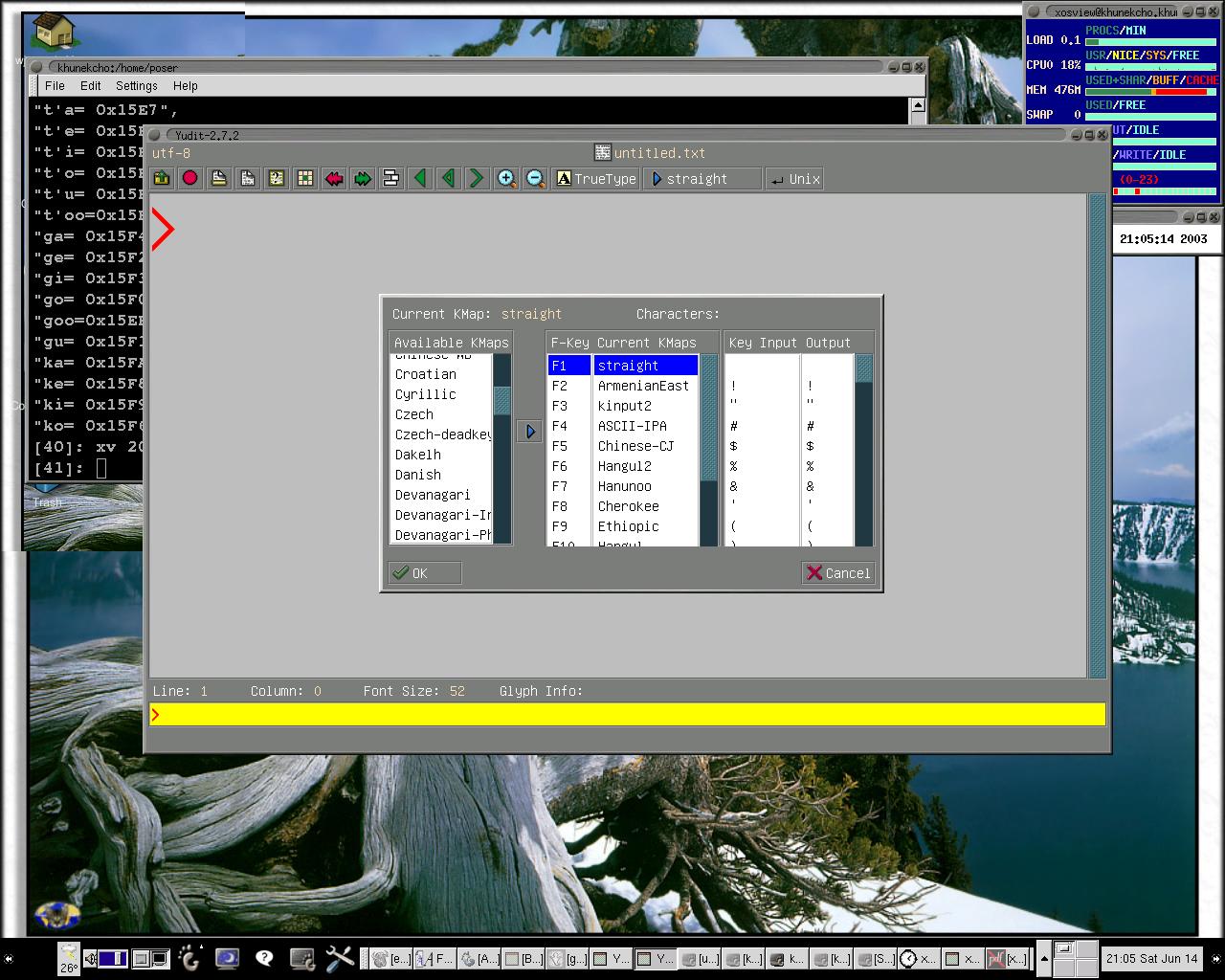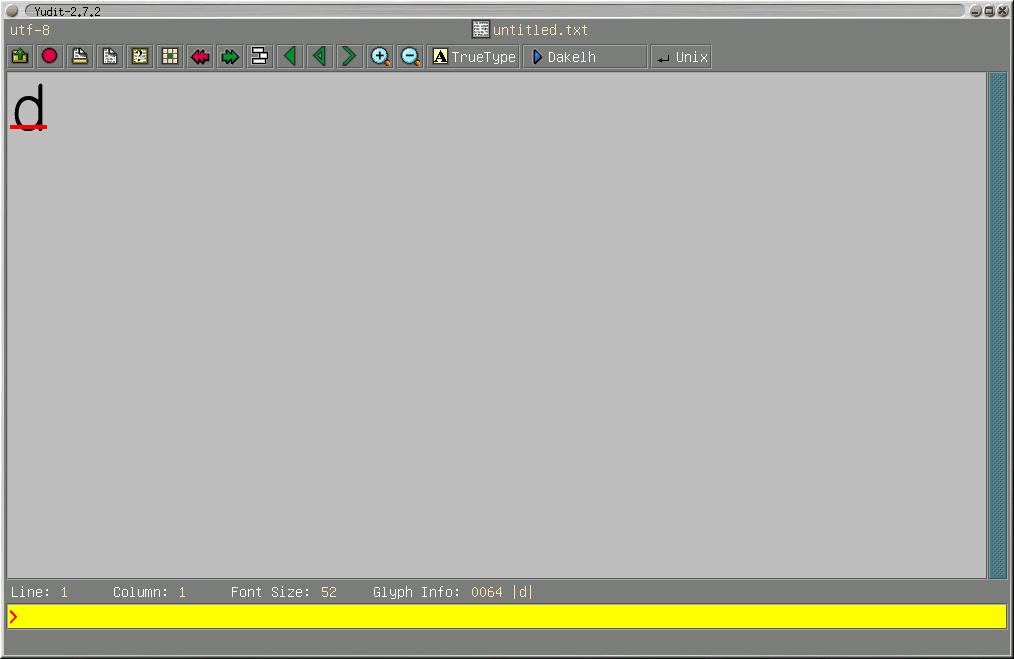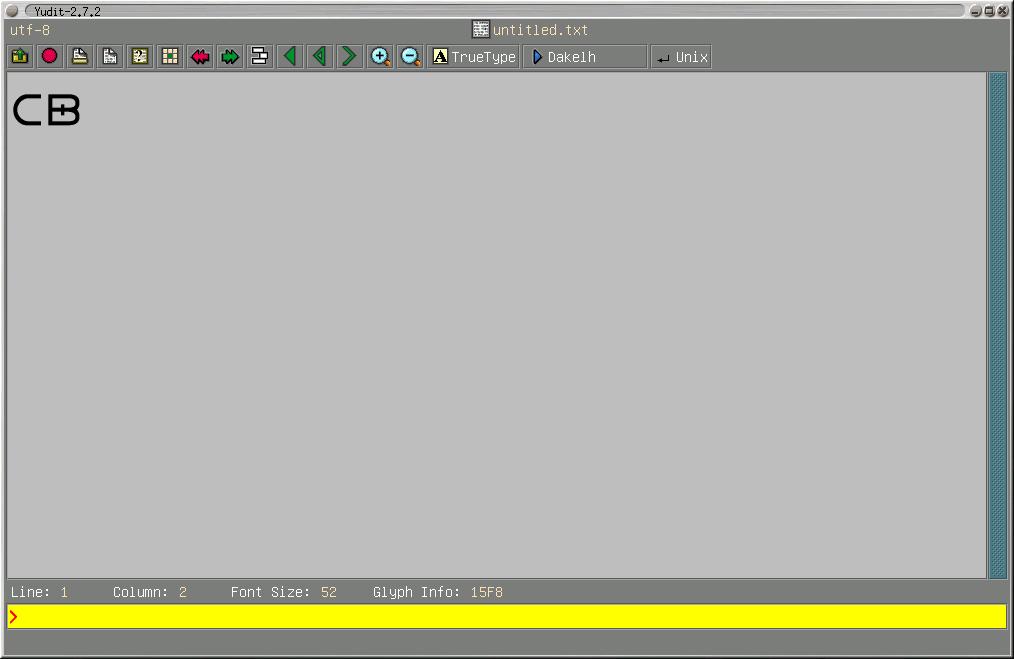
Once you have obtained a Unicode font that contains the syllabics,
you need to install the font and tell Yudit about it. To install it,
after unpacking the file if necessary, put the ttf file
in the subdirectory .yudit/fonts in your home directory,
or put it in /usr/share/yudit/fonts. Then edit the
file yudit.properties. If you are the system manager, you can
edit /usr/share/yudit/config/yudit.properties. Otherwise,
you can edit your personal configuration file .yudit/yudit.properties.
You need to add the name of your font file to the list of fonts
assigned to yudit.font.TrueType. For example, here is how the relevant
line might look before you add your font file:
yudit.font.TrueType=arial.ttf,msgothic.ttf,gulim.ttf,raghu.ttf
If your font file is called absechra.ttf, you should add it to the
end, separated by a comma from the preceding entry. The result will look like
this:
yudit.font.TrueType=arial.ttf,msgothic.ttf,gulim.ttf,raghu.ttf,absechra.ttf
Once you have done this, you can display syllabics. However, without a keymap the only way to enter them is by their Unicode values. As of version 2.7.5 a suitable keymap (named Dakelh.kmap) is distributed with Yudit. In the input mode provided by this keymap (listed as Dakelh in the input mode selection window), one can type in the CLC system and have text appear in syllabics.
To use the Dakelh keymap you have to make it one of your current input methods. When Yudit starts up, it looks like this:

Clicking on the tab with the blue arrow brings up the keymap selection window:

The leftmost column shows the available keymaps. The middle column shows the currently available twelve keymaps. The righthand column shows the mapping defined by the currently selected keymap.
To make Dakelh available, first scroll down in the leftmost column until you find Dakelh and click on it. Next, choose one of the twelve positions in the middle column for this keymap. In the illustration below, slot number five, currently occupied by Chinese, has been selected to become the position for Dakelh.

Now click on the right-pointing arrow between the left and middle columns. This assigns the Dakelh keymap to function key number 5. The window will now look like this:

Clicking on the "OK" button at the lower left will save the new setup and dismiss the keymap selection window. The Dakelh input method will be the current method. You can switch among the twelve currently available keymaps by pressing the associated function keys.
To enter syllabics, just type in the CLC system. Don't be disturbed when you see some roman letters. These are displayed when Yudit can't yet figure out what syllabic letter to display. For example, here is the result of typing d.

Once you type the following "a", Yudit can figure out what character to display so the d is replaced with the character da

When you add a k, Yudit can't be sure what character to display so it displays the k.

Once you add an e, Yudit knows what to do and replaces the k with the character ke.

| HOME |
Yinka Déné Language Institute © 2008